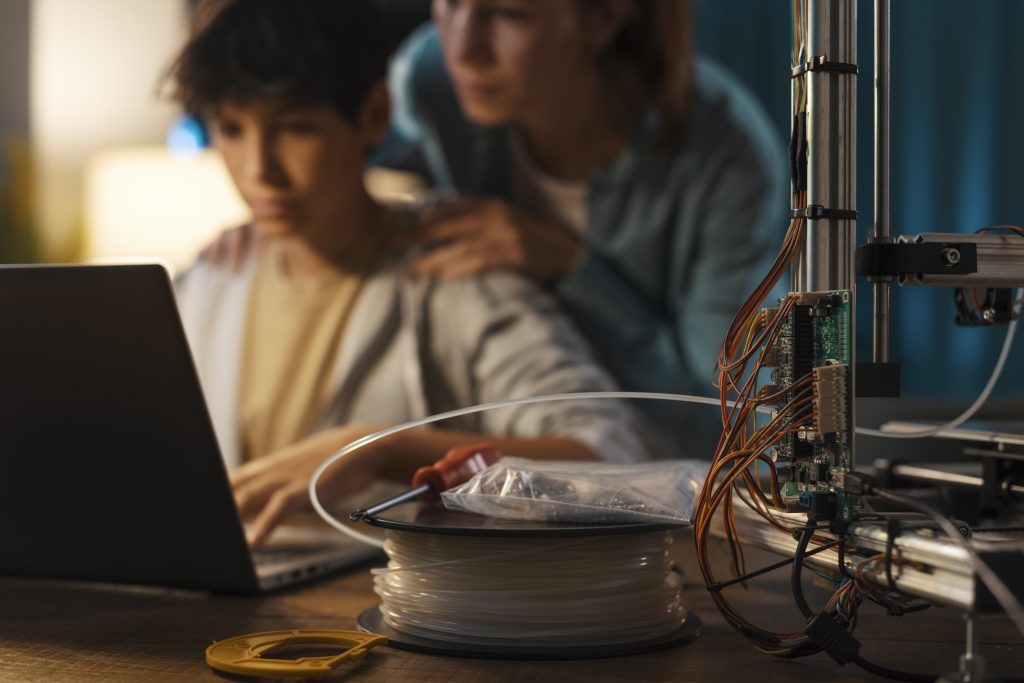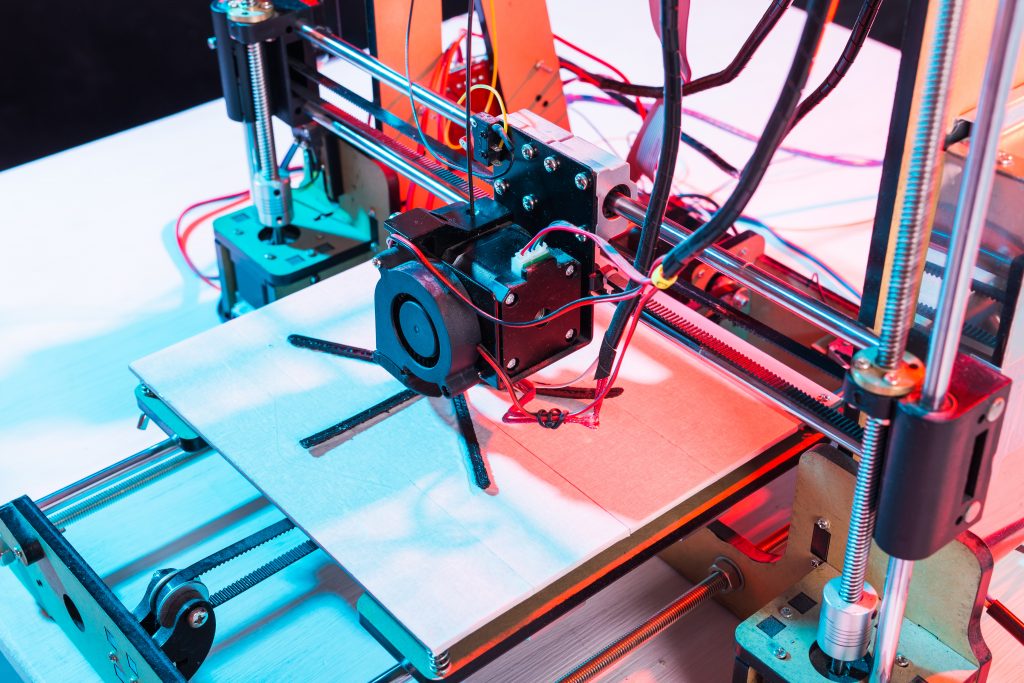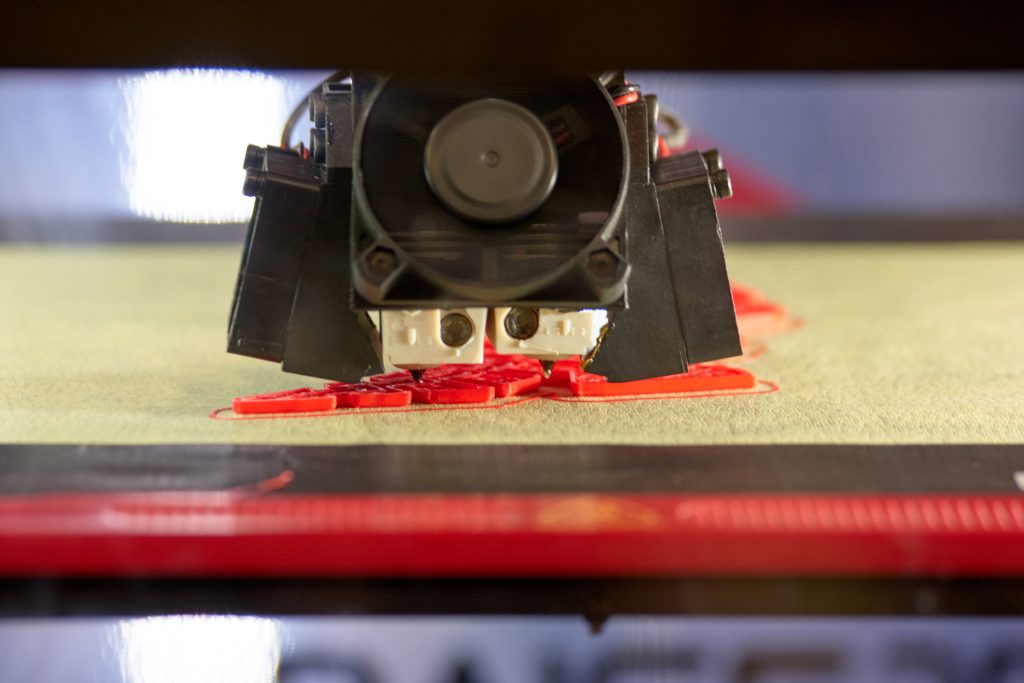

Many people believe that education should be about the three “R’s”; reading, writing, and arithmetic. However, education in today’s society is always adapting to new technologies, one of those technologies is three-dimensional printing. Three-dimensional printing can be used as a learning tool in all subjects to aid students in better understanding the materials being taught. Introducing 3D Printing in Education has the potential to change education as we know it by making learning more interactive, engaging, and exciting.
Three-dimensional printing is often discussed in relation to education because it has the potential to change the way that we learn and interact with information. For example, instead of reading about a historical event or looking at a two-dimensional image of an object, you could print out a three-dimensional model of that event or object. Or instead of learning about anatomy from a textbook, you could print out a 3D model of the human body.
With various 3D Printers and filament options to choose from, the VR Superstore is on the forefront of 3D Printing technology. Where learning and understanding 3D printing technology and it’s plethora of uses is the start, our online store is the next step into the world that 3D printing technology is inextricably set to unleash. Keep reading for more information, research, and studies, and afterward, choose your favorite option in our store to truly begin your journey.

There has been research done on the benefits of children using 3D printers to learn. A study by the University of Michigan found that children who used 3D printers had better spatial understanding than those who did not use them. Another study found that when children were asked to create a model using a 3D printer, they were more engaged and excited about learning than when they were just asked to read or listen to
The potential uses for 3D printing in education are endless. And as technology continues to evolve, we can only imagine what new and exciting ways it will be used to educate children. So far, there have been many experiments and research projects conducted that suggest 3D printing can be a useful tool for education. For example, one study found that students who learned with 3D printed models scored better on tests than those who learned with traditional textbooks.
Another study found that students who used 3D printed models were able to retain information better than those who didn’t. This is likely because using three-dimensional models helps students visualize information in a way that two-dimensional images cannot.
There are already some examples of educational applications for 3D printing. In one experiment, students who learned with 3D-printed models retained more information than students who learned with traditional methods like textbooks. In another study, children with Autism Spectrum Disorder (ASD) showed improved social skills after playing with 3D-printed toys.

One way that three-dimensional printing could be used in education is to create models of objects that are difficult to visualize from two-dimensional images. For example, let’s say you’re studying the human brain. It would be much easier to learn about the brain if you had a three-dimensional model that you could hold in your hand and look at from all angles. Or let’s say you’re studying the solar system. It would be much easier to understand the relative sizes of the planets and their distances from the sun if you had a three-dimensional model of the solar system that you could hold in your hand.
3D printing could also be used to create models of molecules or atoms. This would allow students to visualize how these tiny particles interact with each other. Or 3D printing could be used to create models of cells or tissues. This would allow students to see how these tiny building blocks work together to form larger structures.
Let’s say you’re studying a chemical reaction. It would be much easier to understand the reaction if you could see a three-dimensional model of the molecules involved in the reaction. Or let’s say you’re studying a historical event. It would be much easier to understand the event if you could see a three-dimensional model of the battlefield or the city where the event took place.
Three-dimensional printing can also be used to create customized products or objects. For example, let’s say you’re a teacher and you want to create a custom education game for your students. With three-dimensional printing, you could create a prototype of the game, test it with your students, and then print out a final version of the game that is customized for your students’ needs.
There are already some examples of 3D printing being used in education. In 2013, a group of students at the University of Colorado Boulder used 3D printing to create models of human brains. The students were able to print out different parts of the brain, and then put them together to form a complete model. This allowed the students to get a better understanding of how the brain works.
In 2014, a school in South Africa used 3D printing to create models of human organs. The students were able to print out different parts of the body, such as the heart, lungs, and kidney. This allowed the students to get a better understanding of how these organs work.
Another example comes from the Massachusetts Institute of Technology (MIT). MIT has developed a 3D printing system that can print out electrodes. These electrodes can be used to measure electrical activity in the brain. This system could be used to help researchers understand how the brain works, and also to develop new treatments for conditions like epilepsy or Parkinson’s disease.
Three-dimensional printing is still a relatively new technology, and it’s evolving quickly. As the technology becomes more widespread and easier to use, we can expect to see even more education applications for 3D printing. As three-dimensional printing technology continues to evolve, it will become even more powerful and useful for education. So if you’re looking for a way to improve your education, consider using our three-dimensional printer options that are available on our online store.
The Vr Superstore offers a wide range of products that can be used for education, with 3D printers just being the start. Shop now and take advantage of the many educational benefits that the VR Superstore offers.
Virtual Reality (VR) is no longer a niche technology for gamers and tech enthusiasts; it has rapidly become a transformative tool across industries. From gaming and entertainment to education, healthcare, and business, VR is changing how we interact, learn, and experience the world. If you’re considering investing in VR headsets and accessories, now is the […]
Buying VR Headsets From The VR Super Store Stepping into the world of virtual reality (VR) can be an overwhelming experience if you are a first time buyer. The VR Super Store is dedicated to helping customers of all experience levels find the perfect VR headset that fits exactly what you need. This guide aims […]
Buyers Guide for VR & 3D Printing Products Virtual Reality (VR) and 3D printing technologies are revolutionizing multiple industries, from gaming and entertainment to healthcare and manufacturing. If you’re looking to dive into these innovative fields, this guide will help you make informed decisions when purchasing VR and 3D printing products. The VR Super Store […]
Stay updated with the latest VR news, exclusive discounts, and special offers by subscribing to our weekly newsletter.